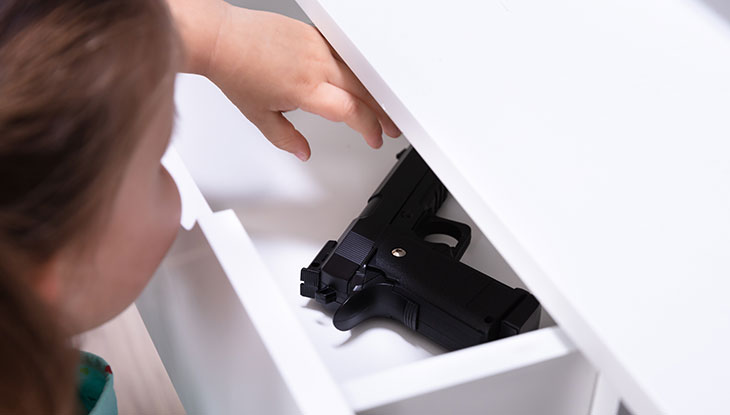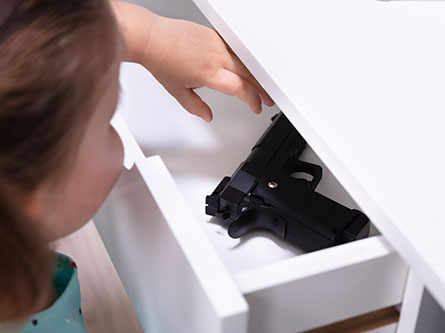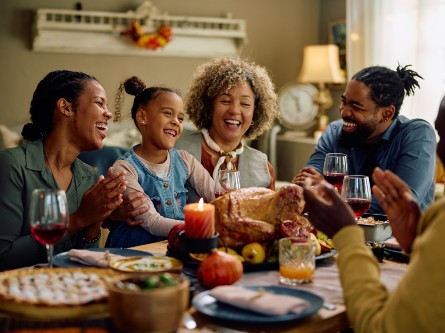
More than 4,300 children and teens are shot and killed, and more than 17,000 are shot and wounded in the U.S. each year, according to data from 2019-2023. Many of these deaths and injuries could have been prevented by putting additional protections in place at home.
We have some tips for parents to help keep children safe from gun-related injuries.
What can families do to keep their children safe from firearm-related injuries?
Research shows the most effective way to prevent firearm-related injury to children is to keep guns out of homes and communities. Firearms should be removed from places where children live and play. But if guns cannot be removed from the home, they should be locked and stored in a lockbox, gun safe or cable lock.
Sign up for our Health Highlights e-newsletter
What are the best ways to store firearms?
Hiding a gun is not a safe option. Lockboxes, gun safes and cable locks are three ways to safely store firearms. Your choice will depend on the type of firearm that will be stored (for example, a handgun vs. a rifle) and the number of firearms you will store. The cost can be as little as $5 for a cable lock.
It can be difficult to tell if your locking device meets safety standards. There are no current federal standards, but some states do provide a list of approved devices that meet safety criteria. The California Department of Justice maintains an online roster of certified locking devices allowed for sale in the state.
Check out our Kids Considered podcast
Is it safe to have a handgun at home to protect my family?
Unfortunately, no. In homes with handguns, there is a higher likelihood that the gun will be used to shoot a family member or friend than used in self-defense. Here are some other facts about the dangers of keeping firearms in the home:
- Studies show that owning a handgun increases the risk of suicide.
- Californians living with handgun owners are more than twice as likely to die by homicide.
- Children as young as 3 have the strength and coordination to pull the trigger on a gun.
Explore more children's health topics
How can I keep my kids safe when they visit someone else's house?
When you go to someone else's home, ask questions. When their child is planning to visit a friend or neighbor's home, the ASK (Asking Saves Kids) campaign encourages parents to ask, "Is there an unlocked gun where my child will play?"
One in three U.S. households with young children have guns. About two-thirds of those households do not store the guns in the recommended manner – locked up and unloaded. More than 33% of all accidental shootings of children happen in the homes of their friends, neighbors or relatives.
It can feel like a difficult question to ask, but parents ask about pool safety, pets and allergies. This is just one more question to add to the list. You could say something like, "My child is very curious and often gets into things he shouldn't. Do you have guns or anything else dangerous in your home he/she could get into?"
The ASK campaign is a partnership of the American Academy of Pediatrics and Brady to promote the simple idea of asking this important question to keep children safe.
How should I talk to my child about gun safety?
You can let your child know that if they find a gun, they shouldn't touch it. They should alert a parent or caregiver in the home. But know that talking to your child may not be enough. Children are naturally curious. If a gun is accessible, you run the risk that they will play with it.
It's also important to note that there is a link between the consumption of virtual violence, as seen in movies, TV and video games, and aggressive behavior in children. Young children shouldn't be viewing virtual violence at all. For those under 6 years old, even cartoon violence can have an effect. Look for video game ratings that are E for everyone or G-rated movies for safe viewing.
This blog was medically reviewed by Amy Barnhorst, M.D. She's the vice chair of Community Mental Health and director of the BulletPoints Project.




